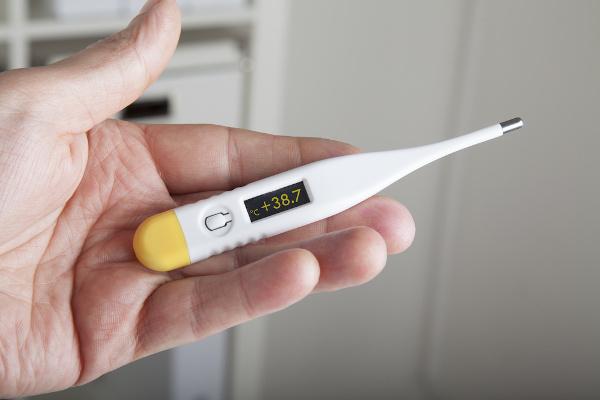At fevers hemorrhagic are syndromes that, as the name indicates, have as a hallmark the occurrence of fever and hemorrhagic manifestations. These diseases can be considered a serious public health problem, since they have a high lethality rate. Yellow fever, malaria, dengue hemorrhagic fever and leptospirosis are examples of this type of occurrence.
Read too: Does bathing help lower fever?
Characteristics of hemorrhagic fevers
In addition to the frames of fevers and bleeding, hemorrhagic fevers can also cause other clinical manifestations in patients, as the symptoms vary greatly depending on the causative agent of hemorrhagic fever and also on how the body reacts to the agent. causative.

Hemorrhagic fevers may present in a lighter way or evolve rapidly, which may lead the patient to death. Thus, it is recommended that the patient receive treatment quickly, even before the confirmation of the causative agent of the disease, in order to guarantee greater success in the treatment. Among the recommended actions is the attempt to correct the coagulation abnormalities and the preservation of bodily functions.
As hemorrhagic fevers can be triggered by different etiological agents, there are different forms of transmission. The Ebola virus, for example, is responsible for triggering hemorrhagic fever and is transmitted through direct contact with blood and body fluids. already the dengue, which has dengue hemorrhagic fever as one of its clinical forms, is transmitted through mosquito bites Aedes aegypti contaminated.
Read too: The relationship between environmental impacts and the emergence of diseases
Examples of hemorrhagic fevers
Yellow fever: is a viral disease transmitted through mosquito bites in urban or wild areas. In wild areas, transmission occurs by mosquitoes of the genus Haemagogus or Sabethes; in urban areas, transmission is done by gender. Aedes. The symptoms of yellow fever are: high fever, headache, muscle pain, vomiting, fatigue and weakness. The disease can lead to complications such as jaundice (yellowing of the skin and mucous membranes) and bleeding.
Dengue hemorrhagic fever: Dengue is a viral disease transmitted by mosquito bites Aedes aegypti contaminated. It has two main clinical forms, the so-called classic dengue fever and dengue hemorrhagic fever. Among the symptoms of the disease are muscle pain, headache, prostration, pain behind the eyes, fever and skin spots. In dengue hemorrhagic fever we have high fever, hemorrhage and abnormal liver enlargement.

Brazilian hemorrhagic fever: disease caused by the virus of the Arenaviridae family that can be transmitted by inhaling particles formed from saliva, feces and urine of contaminated small mammals or by prolonged and close contact with the patient through their secretions or excretions. The symptoms are: fever, body aches, headache, red spots, light sensitivity and mucosal bleeding. As the disease progresses, mental confusion, seizures and behavioral changes may be observed.
Typhoid fever: disease contracted mainly through water and food contaminated by the bacteria Salmonella enterica Typhi serotype. Among the symptoms attributed to typhoid fever, we can mention high fever, headache, slow heart rate, body spots, enlarged spleen and dry cough. Typhoid fever can have complications, with intestinal bleeding being the main one.
leptospirosis: is contracted from contact with urine from animals contaminated with the bacteria Leptospira interrogans. Symptoms are: fever, headache, muscle pain, chills, vomiting, jaundice. In the severe form of the disease, there is a classic manifestation (Weil's syndrome) with the presence of the triad jaundice, hemorrhage and renal failure.
Malaria: disease caused by a protozoan transmitted through the bite of a mosquito of the genus Anopheles infected.Its main symptoms are headache, high fever, chills, sweating, tiredness and vomiting. In severe cases of the disease, the patient may experience hemorrhages, seizures, shortness of breath and changes in consciousness.
By Vanessa Sardinha dos Santos
Biology teacher
Source: Brazil School - https://brasilescola.uol.com.br/doencas/febres-hemorragicas.htm

